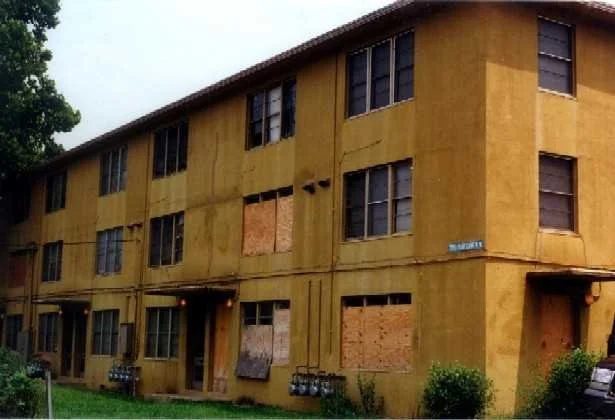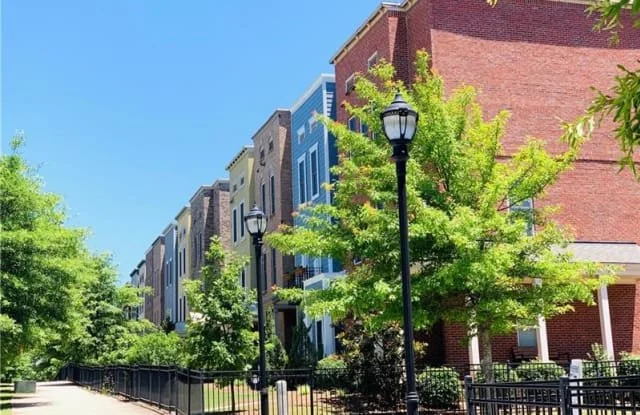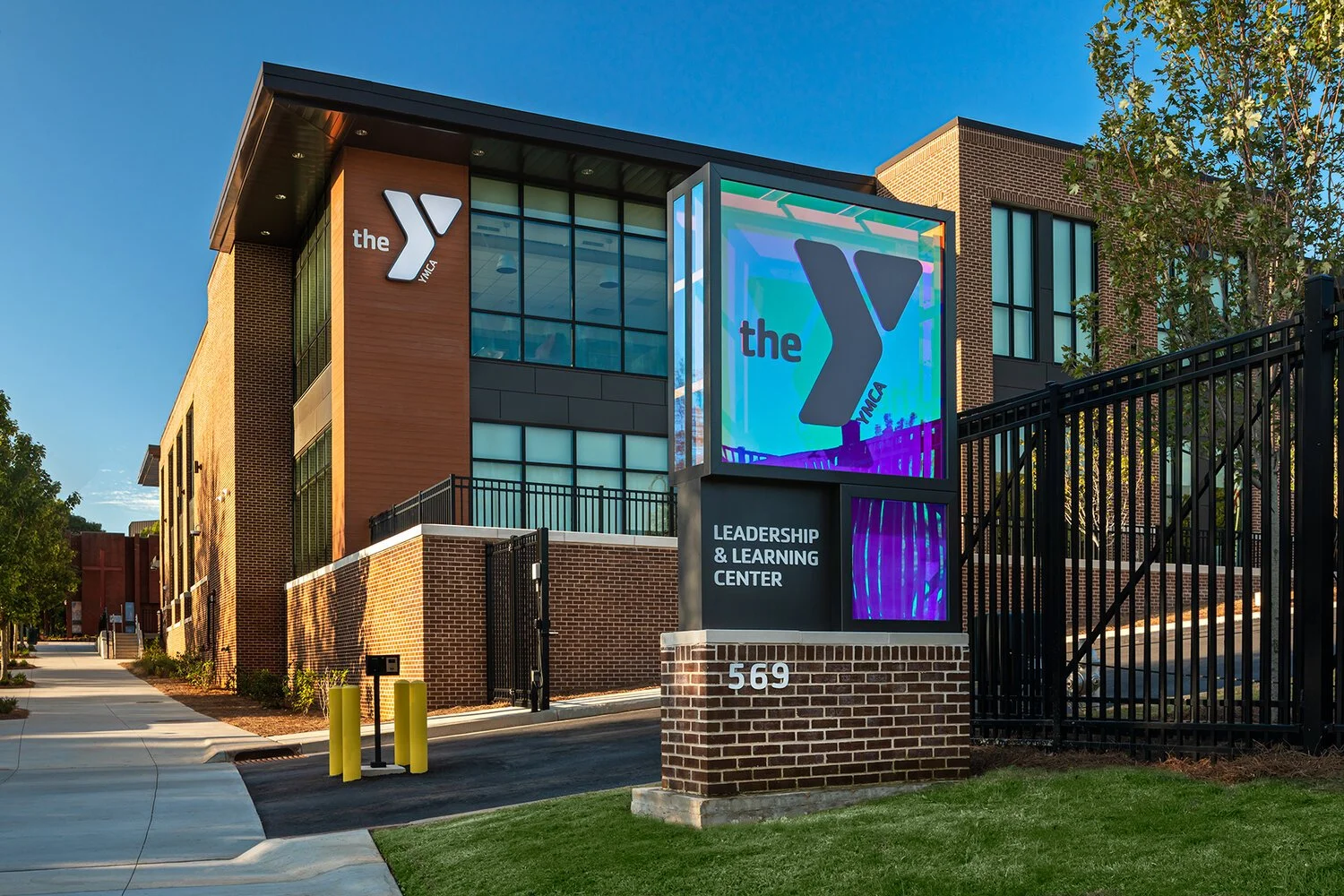Vine City History
The area south of Simpson Road (Joseph E Boone Blvd.) today’s Vine City- was settled at the end of the 1800s by large landowners and a predominantly African American residential area was established, though there were also white subdivisions, schools and churches. In 1910 Alonzo Herndon, the first black millionaire in Atlanta and founder
of the Atlanta Life Insurance Company built his home at 587 University Place and is listed on the National Register. The Herndon’s home is now called the Herndon Home a local museum visited by many from the local, state, regional, national and international communities.
Due to The Great Atlanta Fire of 1917 in the Old Fourth Ward more than ten thousand (10,000) residents were displaced. Many were forced to move westward to the Vine City area. Although the Vine City/Ashby neighborhood is typically a single-family residential area, however, The Eagan Homes public housing development was built in 1941. With the growth of the African American population a commercial district emerged on Martin Luther King, Jr. Drive, replacing many white owned businesses.
Historically, Vine City was a mixed income residential neighborhood where many people and persons of note lived alongside the janitors, maids, factory workers as was necessary and required due to the segregation of the era.
In 1947 the famous Paschal’s Restaurant was opened. Atlanta’s first African American Mayor, Maynard Jackson has family ties to Vine City. Georgia State Representative and Senator Julian Bond and his family also lived in Vine City. Dr. Martin Luther King, Jr. moved his family to Vine City in 1967. His widow Coretta Scott King continued to live in Vine City after Martin’s death until she moved to a condominium on Peachtree Road purchased for her by Oprah Winfrey. Other noted and notable residents of historic Vine City include Mrs. Dorothy Bolden, founder of the Domestic Workers Union, Mr. George Prather, a Tuskegee Airman, and State Representative, “Able” Mable Thomas whose childhood home was in historic Vine City.
The Historic Vine City neighborhood is home to churches that has served the residents for over one hundred years such as Cosmopolitan AME Church and Beulah Baptist church. The neighborhood is blessed with many Parks, including Rodney Cook Senior Park, June Mundy neighborhood Park, the John F. Kennedy playground, and the Charles H. Harper pocket park.
With urban renewal in the 1960’s and 70’s, much of the characteristics of Vine City were lost. During the urban renewal period, a resident organization called the Vine City Development corporation, lead by Mr. Eddie Laws and Mr. Prater contracted with the Department of Housing and Urban Development to build housing in the form apartments for the residents of Vine City. Subsequent to the apartment development the Vine City Development Corporation built a ten-unit subdivision called Tyler Place in the late 1980’s and early 1990’s. In 1976, the Georgia World Congress Center opened near the Vine City neighborhood. In 1985, 1992, 2002 and 2021 the GWCC continued it expansion. Also in 1992, the 72,000 seat Georgia Dome stadium opened east of Vine City. In the year 2017 construction was completed on the Mercedes-Benz 85,000 seat football and soccer stadium.
The redevelopment and revitalization of the Vine City/Ashby area has been slow with many ups and downs. During the late 1980’s thru the early 2000’s, non-profit community development corporations such as the Vine City Housing Ministry and the Tyler Place Community Development Corporation shouldered the burden of building and rehabbing affordable single-family homes in an environment of funding scarcity and lack of confidence in the capacity of these organizations to produce and sustain development potential. However, their work signaled and drove the interest in the Vine City/Ashby neighborhood’s development potential going forward.
On September 21, 2002, a flash flood tore through Vine City and surrounding neighborhoods damaging dozens of homes and destroying hundreds more. In the aftermath, the City of Atlanta razed approximately sixty (60) homes and apartments and resettled many residents in Vine City and relocated others who wanted another option.
Eagan Homes was redeveloped in the late 1990’s by the Atlanta Housing Authority into the Magnolia Park mixed income multi-family community. The first phase of the Historic Westside Village a development by the Atlanta Development Authority (Invest Atlanta) was completed in 2002 featuring a Publix grocery store. In 2006 the Liberty Commons Townhomes were completed. In 2007-2008 The Washington Condominiums were completed. The Publix grocery store closed in 2009. Because there was a huge demand for a grocery store and other commercial development in Vine City/Ashby area, a Walmart superstore was opened in 2013.
With the development of the Mercedes-Benz Stadium commitments by the City of Atlanta, Arthur M Blank Family Foundation, Chick Fil A Corporation and the Chick Fil A Foundation, and Invest Atlanta, funding and organizational development has been launched to further strategically plan, redevelopment, and revitalize the Vine City- Ashby area. Among the initiatives are the following:
Complete the execution and implementation of the Atlanta Development Authority’s (Invest Atlanta’s) 2001 Master Plan (Historic Westside Village).
The creation of an updated Land Use Action Plan
Update the SPI-11 Zoning Ordinance (SPI-19)
Creation of a Community Benefits Plan
Creation of a Master Community Development Organization to serve as the quarterback for the revitalization efforts (Westside Future Fund)
Creation of a workforce development organization (Westside Works)
Reimagine the Joseph E. Lowery Commercial Corridor ( Quest Center for Non-Profits)




